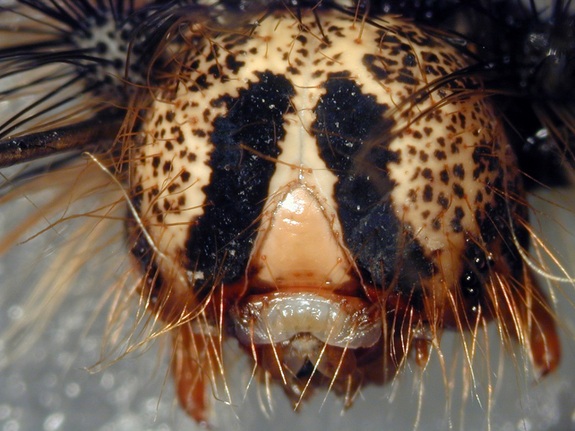Plants and fungi look like peaceful woodland scenery, but underneath the soil some plant-fungi pairs act as a deadly team mummifying insects and draining them of their nutrients, according to a new paper published in Science. The study by Canadian grad student Scott Behie and his research group, shows that the soil fungus Metarhizium can parasitize soil insects and deliver their nitrogen to it’s symbiotic plant partners. While soil bacteria often break down dead insects, this is one of the first examples of a fungus specifically targeting living insects for their nutrients.
Plants and fungi have a long history of cooperation; plants need nitrogen, but only certain types of nitrogen-based molecules will do. Plants often get around this problem by forming symbiotic relationships with fungi that can convert nitrogen into biologically useful forms, sometimes even allowing the fungi to live inside their root cells. In return, fungi get some of the sugars that the plants produce through photosynthesis. However, Metarhizium and it’s plant partners take things a step further: in addition to converting nitrogen into plant friendly forms, Metarhizium is a also deadly insect pathogen. When an insect is infected with Metarhizium the fungus quickly consumes the insect’s tissues from the inside out, mummifying it within a few days. It now seems that Metarhizium is sharing it’s insect prey with it’s plant host.
Behie and his research team wanted to find out whether the fungus was specifically targeting insects to share with it’s host plant, or whether the insect infection was unrelated. To test this, Behie injected waxmoth larvae with a special type of traceable nitrogen, called Nitrogen-15 . He then infected some of the caterpillars with Metarhizium and left some healthy. He then put some healthy and infected insects in pots with plants (common beans and switchgrass) that have symbiotic relationships with Metarhizium . After a month, he tested the plant leaves for the Nitrogen-15 from the caterpillars. He found that in plants that had infected caterpillars had 40 to 50% more Nitrogen-15 than those with healthy caterpillars. The Nitrogen-15 injected into the caterpillars had found it’s way into the leaves in just a few weeks.
However, it is possible that the Metarhizium–infected caterpillars died more quickly than the healthy caterpillars, and simply released their Nitrogen-15 as they decomposed. To confirm that the Metarhizium was actually transferring Nitrogen directly from the insects to the host plant, Behie did a second experiment with another insect pathogen (Aspergillus flavus) that did not have a symbiotic relationship to plants. Plants with the non-symbiotic fungs had only tiny increases in Nitrogen-15 , no different from the increases found in plants without fungus at all. Only plants that had Metarhizium were able to gain Nitrogen-15 from the insects.
The discovery that Metarhizium can both kill insects and aid plants is exciting to agricultural scientists. Metarhizium is used as a natural pesticide to protect crops from insect pests. However, it now seems like it might also be natural fertilizer too, converting once deadly pests into a useful source of nutrition for plants. Since Metarhizium is an incredibly common fungus, found all over the world, it’s likely that there may be some underground mummifcation going on in your back yard.
SW. Behie, P. M. Zelisko, M. J. Bidochka1 (2012). Endophytic Insect-Parasitic Fungi
Translocate Nitrogen Directly
from Insects to Plants Science DOI: 10.1126/science.1222289









